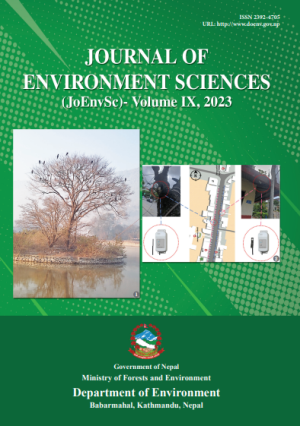Identification of mammalian indicators of climate in Chitwan Annapurna Landscape (CHAL) to assess climate change
DOI:
https://doi.org/10.3126/jes.v9i1.56485Keywords:
biodiversity, Himalaya, Chitwan Annapurna Landscape, climate change, faunal indicator, mammalsAbstract
The consequences of climate change on species and ecosystems are evident, and the landscape of Nepal does not remain unaffected. Himalayan region is climate sensitive, even a tiny fluctuation in climate can markedly affect numerous species and their habitats. Moreover, the Himalayan region is inhabited by some of the most threatened and endangered biodiversity on Earth, including habitat specialists and endemic species, which may accelerate the extinction of some species. Hence, species affected by climate change should be monitored and identified as faunal indicators of climate change in (Chitwan Annapurna Landscape) CHAL. For that, we compared studies conducted by the National Trust for Nature Conservation (NTNC) and World Wildlife Fund for Nature (WWF Hariyo Ban Program). First, we identified the common and overlapping species. Second, we identified the critical species for climate monitoring based on habitat range, elevation, role as habitat specialist/generalist, and impact observed in previous studies based on the species occurrence in that region. Species with a long-life span, specialist habitat type, and short home range are exposed to climate change for extended periods, making them more vulnerable as per the literature. In particular, our results demonstrate that the one-horned rhinoceros found in the lower belt of Nepal and snow leopard, and pika, being habitat specialists, with low reproductive rate and cannot tolerate change in temperature experience a high impact owing to climate change and can be used as indicators of climate change. In addition to that Assasames Monkey and elephant has medium impact and hence can be considered as the indicator to monitor climate change. However this study does not incorporate specific species-based study regarding the impact of climate change which is required to assess climate change sensitivity to facilitate global wildlife protection.




